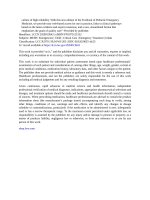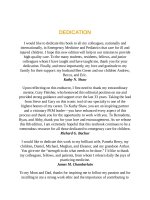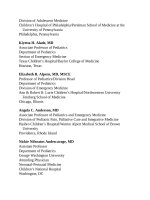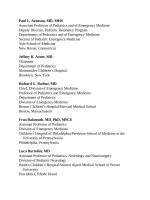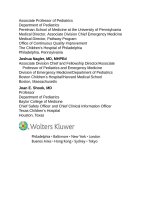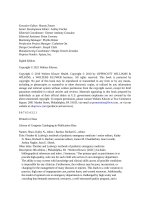Pediatric emergency medicine trisk 1127 1127
Bạn đang xem bản rút gọn của tài liệu. Xem và tải ngay bản đầy đủ của tài liệu tại đây (43.4 KB, 1 trang )
inflammation. It may result from Eustachian tube dysfunction or represent the
aftermath of resolved AOM, but is not an acute bacterial infection.
Patients with ear pain from AOM should receive analgesic treatment because
antibiotics do not generally provide symptomatic improvement for at least 24
hours. Ibuprofen or acetaminophen are effective analgesic treatments of AOM.
Topical anesthetic–containing ear drops provide prompt, but short-lived pain
relief. Benzocaine-containing drops are no longer available in the United States
because their safety has not been adequately studied and benzocaine can cause
methemoglobinemia, especially in younger patients. These oil-based preparations
should not be administered if the TM has ruptured. Narcotic analgesia can be
used for very severe pain, but should rarely be necessary. Efforts toward
alternative approaches to pain management should be maximized first.
